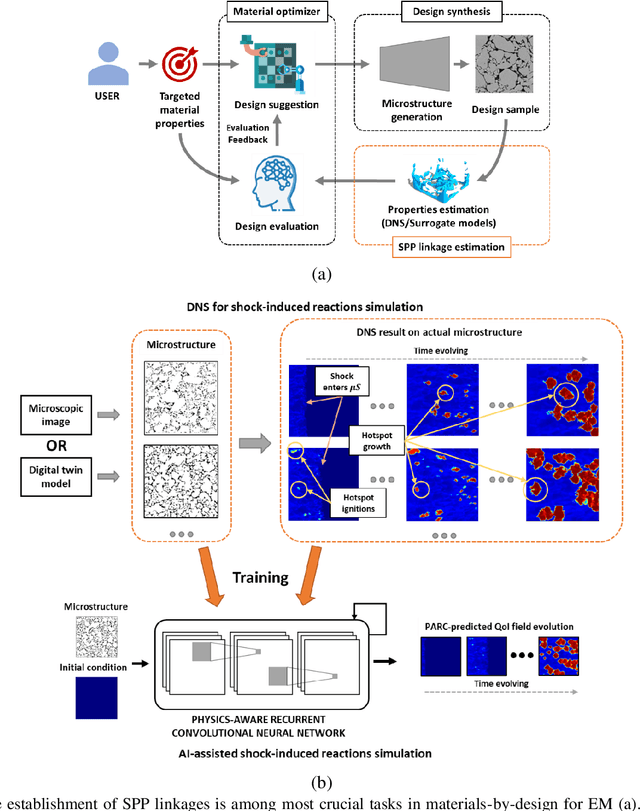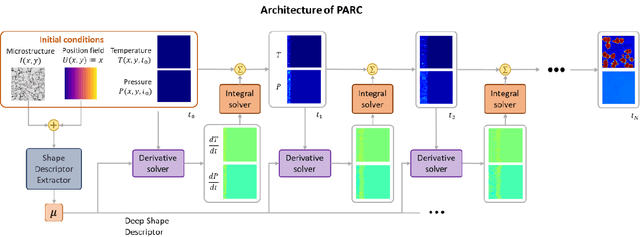Physics-Aware Recurrent Convolutional (PARC) Neural Networks to Assimilate Meso-scale Reactive Mechanics of Energetic Materials
Paper and Code
Apr 04, 2022



The thermomechanical properties of energetic materials (EM) are known to be a function of their microscopic structures, i.e., morphological configurations of crystals and pores. This microstructural dependency has motivated vigorous research in the EM community, seeking to engineer material microstructures with targeted properties and performance under the materials-by-design paradigm. However, establishing the complex structure-property-performance (SPP) relationships of EMs demands extensive experimental and simulation efforts, and assimilating and encapsulating these relationships in usable models is a challenge. Here, we present a novel deep learning method, Physics-Aware Recurrent Convolutional (PARC) Neural Network, that can "learn" the mesoscale thermo-mechanics of EM microstructures during the shock-to-detonation transition (SDT). We show that this new approach can produce accurate high-fidelity predictions of time-evolving temperature and pressure fields of the same quality as the state-of-the-art direct numerical simulations (DNS), despite the dramatic reduction of computing time, from hours and days on a high-performance computing cluster (HPC) to a little more than a second on a commodity laptop. We also demonstrate that PARC can provide physical insights, i.e., the artificial neurons can illuminate the underlying physics by identifying which microstructural features led to critical hotspots and what are the characteristics of "critical" versus "non-critical" microstructures. This new knowledge generated alongside the capacity to conduct high-throughput experiments will broaden our theoretical understanding of the initiation mechanisms of EM detonation, as a step towards engineering EMs with specific properties.
 Add to Chrome
Add to Chrome Add to Firefox
Add to Firefox Add to Edge
Add to Edge